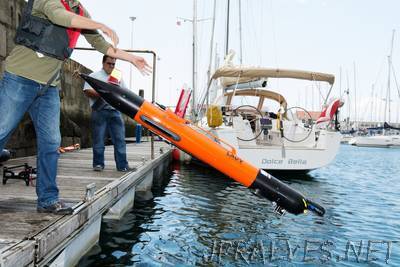
“THERE’S A PLACE where the internet, Wi-Fi, and GPS do not exist. Communication is haphazard: Sometimes messages arrive different times at the same place, the same time at different places, or not at all. It’s not North Korea, or a time portal to the 1980s. It’s anywhere, today, under the ocean. For scientists talking to submarines, robots, and other instruments, data travels at dial-up speeds of single bytes per minute—far slower than the megabits per second we use in the office or at home. Oceanographic researchers have gotten around the problem by connecting devices to tethers of fiber optic cable or copper wires, which provide enough bandwidth to stream images of the Titanic or weird creatures that live around underwater volcanic hot springs. But the heavy cables can also get tangled, dragging down the vehicles they connect. But a group of scientists from Europe and the United States are trying to cut the cable on underwater data. They foresee a wireless communications network that would allow sleek, torpedo-shaped autonomous underwater vehicles to scout the murky depths, collect information, talk to each other, and then return to a central point to dump their data at regular internet speeds.”
